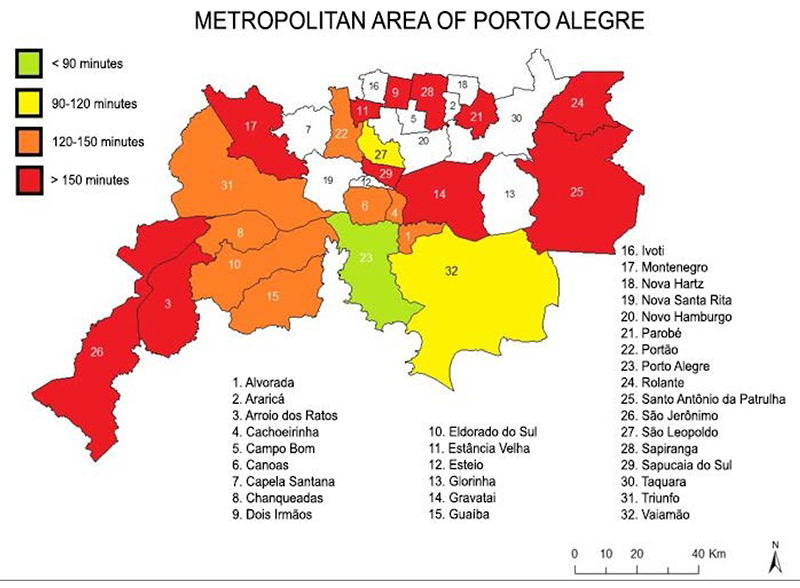Volume 112, Nº 4, April 2019
DOI: http://www.dx.doi.org/10.5935/abc.20190005
ORIGINAL ARTICLE
Comparative Analysis between Transferred and Self-Referred STEMI Patients Undergoing Primary Angioplasty
Maurício Balk
Henrique Basso Gomes
Alexandre Schaan de Quadros
Marco Aurélio Lumertz Saffi
Tiago Luiz Luz Leiria

Abstract
Background: Studies have shown the benefits of rapid reperfusion therapy in acute myocardial infarction. However, there are still delays during transport of patients to primary angioplasty.
Objective: To evaluate whether there is a difference in total ischemic time between patients transferred from other hospitals compared to self‑referred patients in our institution.
Methods: Historical cohort study including patients with acute myocardial infarction treated between April 2014 and September 2015. Patients were divided into transferred patients (group A) and self-referred patients (group B). Clinical characteristics of the patients were obtained from our electronic database and the transfer time was estimated based on the time the e-mail requesting patient’s transference was received by the emergency department.
Results: The sample included 621 patients, 215 in group A and 406 in group B. Population characteristics were similar in both groups. Time from symptom onset to arrival at the emergency department was significantly longer in group A (385 minutes vs. 307 minutes for group B, p < 0.001) with a transfer delay of 147 minutes. There was a significant relationship between the travel distance and increased transport time (R = 0.55, p < 0.001). However, no difference in mortality was found between the groups.
Conclusion: In patients transferred from other cities for treatment of infarction, transfer time was longer than that recommended, especially in longer travel distances. (Arq Bras Cardiol. 2019; 112(4):402-407)
Keywords: ST Elevation Myocardial Infarction/complications; Angioplasty,Balloon,Coronary/methods; Myocardial Reperfusion/methods; Fibrinolytic Agrnts; Intensive Care Units.















